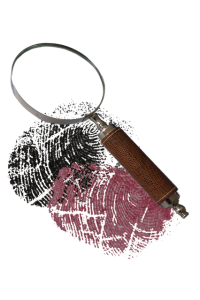As any thriller writer knows, constructing a successful plot requires firm foundations and reliable evidence. Without these elements in place, the thrill of the story falls flat, and the reader’s sense of suspense is lost. But do you know what evidence in writing is and how it can be used to bolster your thrillers?
This blog post will explore the importance of evidence when crafting a captivating thriller plot.
Understand the importance of evidence in thrillers
What is evidence in writing? Evidence is an integral part of any thriller, and it can be used to create suspense in a number of ways. Remember to make sure that your evidence supports your argument.
Evidence gives the story structure by providing readers with clues and hints which help them piece together what’s happening. Knowing these details helps the reader feel like they’re solving a mystery alongside the protagonist!
Learn how to use evidence to build suspense and anticipation
In addition to helping create structure, evidence can build suspense and anticipation in a story. This is done by carefully selecting what evidence you reveal at any given time.
Familiarize yourself with the genre
– Read your favorite thrillers and note how writers use evidence to build suspense.
Understand basic concepts
– Learn about terms like presumption, the conclusion of law, evidence, opinion testimony, and hearsay so you can apply them logically to your narrative.
Know how to evaluate source material
– Check out books and scholarly articles for an overview of how different types of evidence operate in a courtroom setting—the basis for any successful thriller novel.
For example, if you’re writing a crime thriller, it would be prudent to withhold certain pieces of information that may not be crucial for the reader to know at the moment. Doing so helps create suspense as readers wonder what else they don’t know could impact the story.
Research actual cases that have been solved by gathering and analyzing evidence

This could include looking into cold cases and court transcripts. This will give you an idea of what clues or factors might be important when constructing a scene in fiction.
Find your way to create evidence-based thriller stories
While it’s essential to understand how evidence works in thrillers, you should also find a way to create stories based on evidence.
Every writer has a creative approach to building a story, so don’t be afraid to experiment with different techniques and ideas until you find a style that feels right for you.
Decide what type of evidence is appropriate for your story
It’s essential to consider the type of evidence that works best for your story. Evidence can range from detailed to physical or scientific, and each style has strengths and weaknesses. Consider what would be most effective for your plot before committing to a particular form of evidence.
Evidence can come in many forms, such as personal stories or experiences, statistics, expert opinions, and research-based evidence. Depending on your story, pick the evidence that best supports your argument and helps build credibility for your narrative.
The six different types of evidence in writing:
1. Anecdotal evidence refers to personal experiences or stories shared by individuals.
2. Statistical evidence includes market trends, surveys, polls, and census data.
3. Textual evidence involves written words as primary source material that supports an argument or idea.
4. Testimonial evidence is a type of persuasive evidence that relies on the credibility and authority of an individual or group.
5. Analogical evidence is an argument that uses analogies to convey information or support a particular point.
6. Logical evidence is based on facts and logic rather than feelings and emotions.
No matter what kind of evidence you use, ensure it is thorough, accurate, and relevant to your story.
Consider the different kinds of forensic tests available

DNA testing, fingerprint analysis, handwriting examination, etc., are applicable regardless if you’re writing non-fiction or fiction. Familiarizing yourself with these procedures could help add authenticity to your story.
By understanding the power of evidence and learning how to use it effectively, you can write thrilling stories to keep readers on the edge of their seats. With patience and practice, you can craft suspenseful thrillers that stand out!
Use research to add detail and authenticity to your story
Thriller plots also benefit from research. After all, a story without details to support it can be difficult to believe for some readers. Researching the details of your plot will add authenticity and make it more believable, giving readers that extra push they need to stay invested in the story until its resolution.
Evidence can be separated into two categories, primary and secondary sources, essential to understanding a research topic or conducting an investigation.
– Primary sources of evidence are those created when an event occurred or by someone involved. Examples include diaries, autobiographies, speeches, letters, interviews, official records such as birth and death certificates, and government documents. These sources provide firsthand information about what happened during a specific moment or event.
– Secondary sources are those which interpret or analyze primary source material. Examples include textbooks, journal articles, and reviews of books or films based on a true story. Secondary sources interpret the information from the primary source material for public understanding and use.
Here are some excellent research ideas:
Pay attention to local law enforcement investigations

Relevant information may be found on publicly accessible databases like Law Enforcement Online. Observe police officers at work or engage in dialogue with them to gain insights into criminal investigation practices from those who’ve experienced crime scenes firsthand.
A direct interview with an expert on your topic might give you testimonial evidence supporting your topic. However, it would be best if you established credibility for the expert before using the testimonial.
You can also use direct quotations from a book or other text source.
Immerse yourself in real-world investigations and trial proceedings
Attend court hearings whenever possible and listen closely during open dialogues between legal representatives.
Look at the media coverage of crimes
They understand how such elements feature in storytelling. For instance, news sources generally focus only on certain aspects which they find interesting while keeping other details out of their reports for various reasons – which can give an insight into how elements should be revealed within the narration.
Use evidence to create believable characters and settings
Evidence can also help build believable characters and settings within a thriller plot. By providing evidence, readers have a real reference point for understanding what’s going on within the story.
Consider researching a character’s backstory or origin story—what is their family life like? Where did they grow up? What kind of education do they have? All of these little details shape how a reader perceives your character.
Similarly, for the setting—do you need to know about local customs to depict an area accurately? Or climate patterns if you’re writing about an outdoor landscape? You can do scientific studies such as surveys or interviews, observe people’s behavior online, and read through reports from newspapers or magazines.
Building thrillers on firm foundations requires more than just a great plot—it also involves using evidence intelligently and creatively. By understanding the importance of evidence, knowing how to use it to build suspense and anticipation, and researching details for authenticity, you can create a thriller that’s sure to thrill.
Craft scenes that are full of excitement and tension with evidence at their core
Once you’ve understood the basics of using evidence in thrillers, it’s time to apply that knowledge to craft scenes full of excitement and tension.
Scenes should be crafted around evidence and clues so readers can pick up on them as they progress through the story. Doing this will ensure that each stage is packed with suspense as readers try to decipher the meaning of the evidence and guess what’s coming next.
With a bit of practice, you can create exciting and suspenseful scenes. So get out there and start writing your own thrilling stories with evidence at their core!
Doing all these steps should ensure you have ample knowledge when writing a captivating legal thriller packed with authentic details birthed from extensive research done beforehand!
Conclusion
Evidence is one of your most essential tools when crafting an exciting and gripping thriller story. From building suspense with facts and clues to creating tension through authentic details and characters, evidence gives life to your story.
With a few simple guidelines in mind and plenty of research, the possibilities for thrilling stories that contain compelling evidence are nearly endless! Ultimately, it would be best if you had fun experimenting with different types of evidence to make the story come alive in a unique way that will leave readers on the edge of their seats.
Thank you for taking the time to read. May you find success and joy in all that you create.
If you’re working on your first novel and are looking for more help with your writing, please check out my other articles at https://ullahakanson.com/blog/
Best of luck with your writing!
Ulla
www.ullahakanson.com

